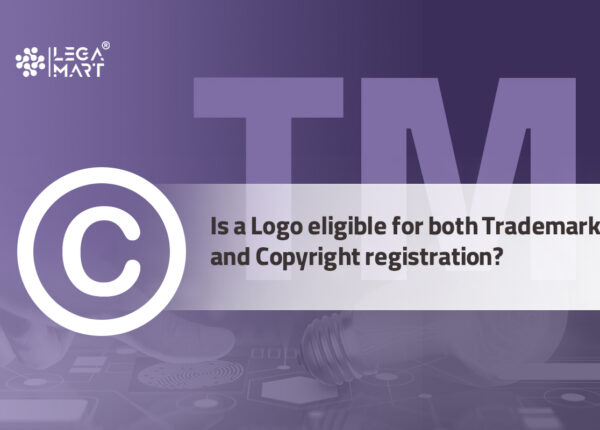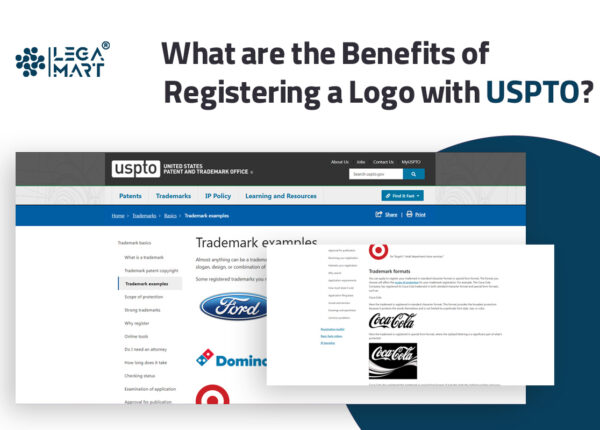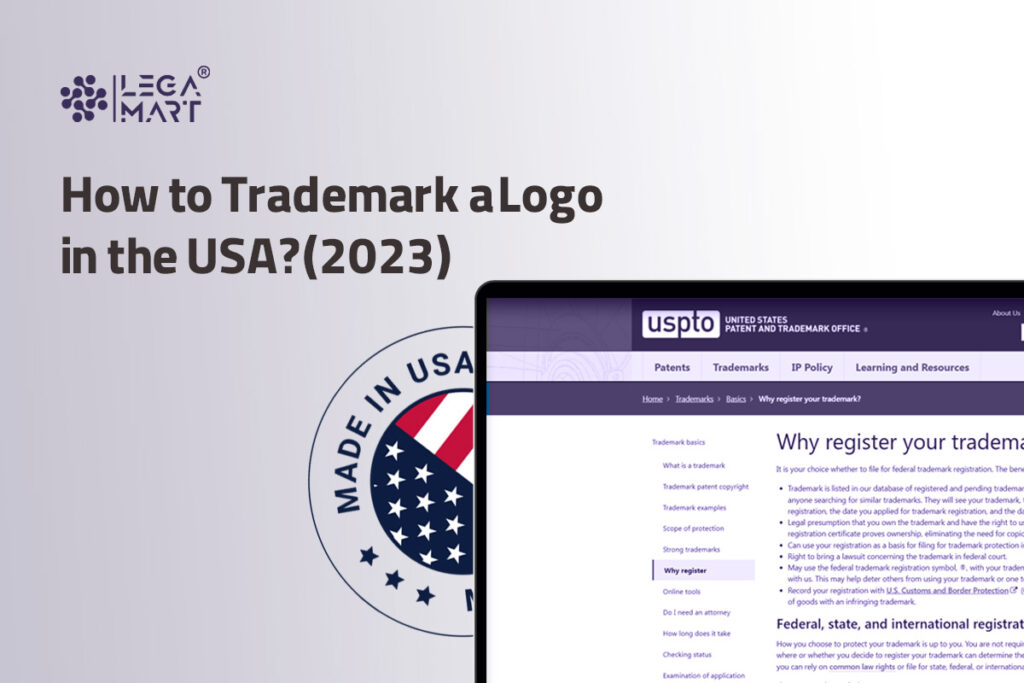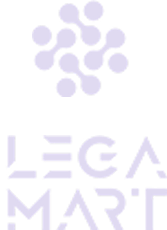Introduction
In this age of competition and fast growth, it is imperative to protect ideas, models of work, etc. Ideas, creativity, and uniqueness are valuable assets, and the legal system has identified them as intellectual property. Intellectual property is protected by law just like tangible property. Intellectual property rights include copyright, trademarks, patents, and trade secrets.
A logo is one of millions of forms of intellectual property. It is a type of IP where trademarks and copyrights overlap. Let’s dive deep into what a logo means, how to trademark a logo in the USA, and how it solidifies the ownership over the particular invention.
What is a Logo?
A logo is composed of images, words, designs, and symbols. It conveys the message of the brand to its customers. A logo identifies a brand under which it has a registered name. Falling under the general category of trademarks in intellectual property, logos can also raise important considerations in Cross-Border & International Law when brands expand globally or operate across jurisdictions.
How Do I Know If my Logo is Eligible for a Trademark?
A logo builds recognition and the identity of a business. Logos puts the impact of messaging, originality, and uniqueness on others. A logo helps the brand stand out from the competition. Logos are used in brand banners, letterheads, products, websites, and social media, to carry a powerful message of the brand in just a little picture or design.
To determine whether a logo is eligible for a trademark in the USA, the applicant should conduct rigorous research in USPTO, search engines and government registers.
What are the different types of logos?
There are 4 types of logos:
Wordmark: It is a well-designed logo in unique font and style, for instance, coca-cola and Facebook.
Lettermark: It is similar to the wordmark. They are used in the company’s initials in logos like hp, HMV, P&G, etc.
Emblem: An emblem combines messages, slogans, geographical locations, and other items, such as logos from universities and government departments.
Brandmark: This unique symbol depicts brand identities such as Apple, Mcdonald’s Golden M, and Starbucks Mermaid.
The applicant must first choose the logo they want for their goods and services. There are multiple benefits of trademarking a name, and they vary from country to country.
Is a logo eligible for both trademark and copyright registration?

A Logo is eligible for both trademark and copyright registration. Therefore, making a reasoned choice and understanding both registration forms becomes imperative.
Copyright is mainly used to protect creative works, including computer programs, books, artwork, music, etc. It is mainly used for ‘tangible mediums’, meaning it is important for consumers to hear, see, or use the copyrighted product. On the other hand, a trademark can be used to register a symbol, word, or unique phrase capable of representing the brand and the company.
When it comes to a Logo, copyright protects the original design of the logo, meaning the logo is protected from any unauthorized copy of its design. On the other hand, a trademark can protect the logo from competitor use.
Usually, when the work is produced in a tangible medium, the user automatically obtains the copyright. However, registration adds benefits to the process. Therefore, it becomes important to ensure that the business retains copyright in all its written agreements. The addition of trademark registration adds value to the intellectual property of the business and works wonders for its brand image.
How can an applicant trademark a logo in the USA?
Applicants can trademark a logo in the USA in common law and federal jurisdiction.
To trademark a logo in the USA in common law jurisdiction, an applicant must use the logo for their goods or services and acquire the identity of their business. Whenever there is a dispute or infringement, they must prove that their logo is part of their business reputation. A logo held under common law is not subject to any rights. It covers a specific geographical area. Hence, an applicant cannot effectively protect their logo with this method.
To register in federal law jurisdiction, an applicant must follow the criteria given in USPTO to acquire exclusive rights over their logo. Registering their Logo with USPTO protects it throughout the USA. It is a robust method of enforcing and securing their rights.
What to do before filing a trademark application in the US?
Select a Logo
When selecting a logo for trademark protection, it is crucial to consider its suitability for registration and legal protection. Not all logos are eligible for registration with the USPTO, and some may not be legally defensible against others using similar logos for related goods or services. Prior to filing a trademark application, it is important to assess:
- Registrability: Determine if the logo you intend to register meets the requirements for registration.
- Protection Difficulty: Evaluate the strength of the selected logo and anticipate the challenges involved in protecting it from infringement.
Conduct a Trademark Search
Perform a comprehensive search to ensure that your desired trademark is not already registered or used by someone else in a similar capacity. This search helps you identify potential conflicts or prior existing rights that could hinder your application.
Determine the Trademark Class(es)
It is vital to accurately identify the specific goods and/or services to which the mark will be associated. Trademarks are categorized into different classes based on the nature of the products or services they represent. Determine the appropriate class or classes in which your trademark should be registered.
Consider Professional Assistance
While not mandatory, consulting with a trademark attorney or specialist can be highly beneficial. They can guide you through the process, provide legal advice, conduct a comprehensive search, and assist in preparing and filing the application correctly.
What are the steps to conduct trademark search?
To conduct a thorough trademark search, it is crucial to investigate three key areas. These areas encompass the federal trademark register, registers maintained by all state governments, and a common law search. By examining these domains, you can ensure a comprehensive assessment of potential conflicts and establish a stronger understanding of existing trademark rights.
Federal trademark Search
This trademark search is commonly categorized into two;
- Knock-out Search: This is a preliminary search that individuals can often conduct independently using the Federal Trademark Register available through the USPTO. It aims to identify registered trademarks and pending applications that closely match or are identical to the proposed trademark. By conducting a knock-out search, one can determine if their proposed mark requires modification.
- Full Search: Unlike a knock-out search, a full search is more extensive and provides results that encompass identical matches and close variations of the proposed mark. You can conduct this search using the USPTO Trademark Electronic Search System (TESS), which will provide information about registered trademarks, including their specific trademark classes. The process is initiated on the USPTO website by following these steps:
- To initiate your trademark search, begin by accessing the “TESS” (Trademark Electronic Search System) database provided by the United States Patent and Trademark Office (USPTO). To access the database, visit the USPTO Trademarks homepage uspto.gov and locate the “Trademark” section. Click the first icon labelled “TESS – Search Trademarks” to proceed.
- Choose from the available search options provided by TESS.
- Perform the search by entering the relevant terms of your trademark in the search box.
- If an exact match is not found, expand the search.
- Once the searches are complete, review the generated report in the TESS system. The report provides details such as record number, serial number, registration number, wordmark, TARR (Trademark Application and Registration Retrieval), and the status of the trademark.
State Trademark Search
Once the federal trademark search is completed, the next crucial step is to conduct a thorough search across individual state government trademark databases. While federal registration offers nationwide protection, it’s important to note that each state maintains its trademark database, providing protection limited to that particular state.
Performing a state trademark search is necessary because if a similar trademark is registered in a specific state and has an earlier in-use date than yours, it can claim priority for use in commerce. This priority claim could result in the cancellation of any federal registration you obtained.
Common Law trademark search
Expanding your trademark search beyond government records, a common law search provides comprehensive coverage. In addition to examining government databases, a common law search allows you to explore telephone listings, industrial records, state trademark directories, internet sources, and more.
Conducting a common law search enables you to identify potential trademark usage by others who may not have sought federal trademark protection. It is essential to note that even without a federal trademark registration, individuals can still establish rights to the trademark through common law. These rights are derived from actual usage.
How to trademark a logo in the USA with USPTO?
To trademark a logo in the USA with USPTO, an applicant must first understand that a logo is part of trademark rights and can be registered with the USPTO under the trademark category. It is essential for the applicant to keep in mind that the application process often involves various legal documentsand forms, many of which can be conveniently signed using electronic signatures streamlining the application process.
The steps to trademark a logo in the USA are as follows:
- Go to USTPO.gov to search the database to see if there is a registered logo like yours. Your application will not be accepted if there are already registered logos that are similar or confusingly similar to yours.
- Click on apply for trademark registration and log into TEAS and TEASi.
- Be sure to have the logo file ready and register in the proper description category.
- Logos are of two kinds: Standard Logo and Special form logo: In the Standard Logo, all you need to specify is the type of text, the colour, and a few other details. A special form logo requires you to give a comprehensive font, colour, format, and details of designs, images, and signatures. Your file should be in jpeg style and less than 1000 kb.
- Fill your application in along with a drawing of the mark and specimen of the mark separately.
- Register your logo in the proper ID of goods and services on which you will use the logo.
- Following that, an examining attorney reviews your application to ensure that it meets all legal requirements.
- Ensure that you check the status of your application regularly.
- Upon approval for publication by the attorney, you will have to wait for public responses and objections to your logo for a few weeks.
- When your logo is certified, you will receive a registration certificate for the fee of $25.
- The logo has to be used in commerce or services to remain alive, and it needs to be renewed every five years.
- The application fee for the logo registration depends upon which option you choose: TEAS Plus requires you to pay $250 per class of goods and services, and TEASi standard requires you to pay $ 350 per class of goods and services.
- You can apply on the following basis: Either use in commerce and Intent to use.
- Use in commerce is when your logo is already in use, and you want to register it.
- Intent to use is when you want to register your logo before starting your business.
- Depending upon your application’s nature and specification, it may take 6 to 9 months to get your trademark certificate.
Monitoring after the issuance of trademark
Obtaining a trademark from USPTO doesn’t mean that work has been completed. To ensure that the trademark is not misused by anyone, it is important to do a Trademark Watch. This is a continuous and intensive ongoing work which requires the specialization of specialized attorneys and companies.
The primary role of these specialized individuals is to constantly check the status of the trademark and ensure that there is no unauthorized use of the trademark or any application for the registration of a similar trademark. If such a situation arises, these specialists immediately send a cease and desist letter to the concerned individual and USPTO.
LegaMart can provide valuable assistance for the Trademark application process and the Trademark Watch required for a registered trademark.
What are the benefits of registering a Logo with USPTO?

The following are some benefits of registering a logo with USPTO:
- You can initiate a trademark infringement lawsuit.
- You will officially be declared the logo owner in the USPTO database. The public will therefore be made aware of your trademark rights.
- Further, if you want to register your trademark internationally with a single application, you can file an application with WIPO under Madrid Convention.
- You can stop the importation of goods similar to your business.
What happens if a trademark application is rejected?
A Trademark application is capable of being rejected for several reasons. Some of the common reasons include:
- The logo is generic.
- High likelihood of the logo getting confused with an already existing logo trademark.
- There is no legitimate identifying mark, and the logo is only used as an ornamentation.
- Logo is inclusive of offensive verbiage or imagery.
- The text or imagery of the logo is geographically misdescriptive, which means that the logo falsely implies that your company and its products are sourced from a specific location.
In case you are not satisfied with the reasoning provided for rejection, it is possible to file an appeal with the trademark office for review of the trademark application. Most often than not, the review application is accepted.
How long does the trademark last?
In the United States, a trademark can have an indefinite lifespan, unlike patents and copyrights. To ensure the continuation of a registered trademark, the owner must submit the necessary maintenance documents to the United States Patent and Trademark Office (USPTO) and fulfil specific legal obligations. The trademark, therefore, remains valid provided it is actively used in commerce and undergoes timely renewal every ten years. However, merely using the trademark is not sufficient. According to Trademark Section 8, the owner must provide evidence of ongoing usage by filing a Section 8 declaration.
The Section 8 declaration involves a sworn statement from the owner affirming that the mark is still in use. It must be filed after the fifth anniversary of the trademark’s registration with the USPTO but before the sixth anniversary. If the declaration is not submitted before the sixth anniversary, the owner may request a six-month grace period upon fee payment.
Conclusion
Registering your intellectual property builds a notable exclusive reputation and relation with your property rights. It guarantees similar rights as would be assigned to you in tangible property. The intellectual property registration ensures its security and exclusivity by preventing infringement of any intellectual property rights.
An exclusive brand identity eliminates the chance of your business’s intellectual property infringement. You can file a suit in case your rights are violated. The logo is one of the ways by which you put down the message of exclusivity on your products or services. Trademarking your logo protects your business interests very well.
It is easy to trademark a logo in the USA. You are safe from infringement issues and counterfeit products or services. When you trademark a logo in the USA, you are assured complete federal protection of your rights, as any copyright violation will be handled vigorously by the USPTO (including those of innocent infringement). USPTO is the final authority to deal with your intellectual property rights across all commercial uses.
If you wish to understand the trademark process for a logo in the UK, check it out here!
Frequently asked questions
How and where do you add a trademark to your logo?
When incorporating the “®” (registered trademark symbol) into your logo design, you have the flexibility to choose its placement considering options such as:
- Above or Below: Decide whether you want to position the “®” symbol above or below your logo. This can be placed in proximity to the main design elements.
- Side Placement: Alternatively, position the “®” symbol on either side of your logo. It can be placed to the left or right of the main design components.
- Size and Format: Determine whether you prefer to make the “®” symbol small and in superscript (elevated) or subscript (lowered). Adjust the size and formatting to ensure legibility while maintaining harmony with the overall logo design.
Can I trademark a logo myself?
Yes, it is possible for anyone to personally apply for a trademark for their logo online. However, it is generally advised by experts that business owners consider hiring an attorney to ensure that the trademark application is prepared correctly and any potential complications can be effectively managed. For businesses outside the United States, it may be necessary to engage a US patent and trademark attorney to assist with filing the application.
Uncover the steps and procedures for immigration to different nations, with a focus on Turkey to Norway and US to Portugal, in Legamart‘s insightful articles.




